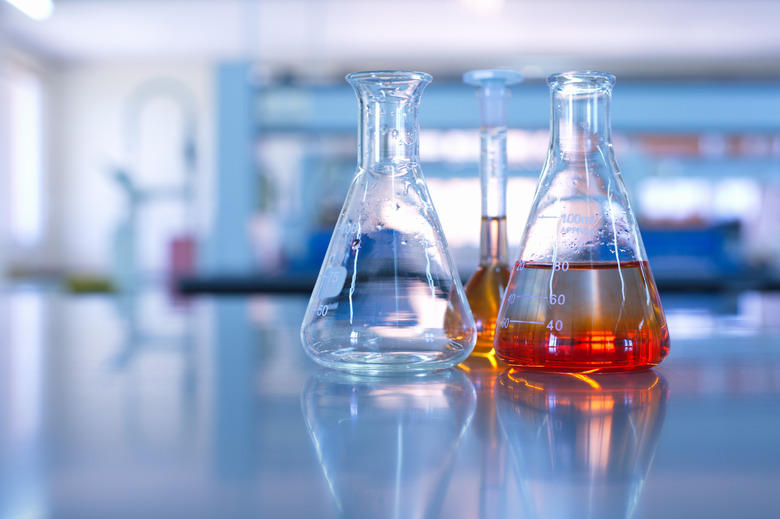How To Convert PPM To NTU
Solutions that contain dissolved solids may not appear clear, because dissolved solids disrupt the amount of light that passes through. Turbidity measurements measure the attenuation of light passing through cloudy solutions, recording results on a meter in nephelometric turbidity units (NTU). You must calibrate the instrument to convert between NTU and parts per million (ppm), because each application is slightly different and instrument response varies. The standardized solution to calibrate the instrument is a Formazin solution, and 1 NTU is the response to a 1 mg/l solution of Formazin.
1. Warm up Turbidity Instrument
Turn on the turbidity instrument and let it warm up. This time allows the light source to reach a point of stable light output.
2. Select Standard Solution Series
Select a series of standard solutions that match the range of NTU you expect to find. Many chemical catalog vendors have these standards available, such as one sold by Cole-Parmer that spans the range of 0.2 to 1 NTU and another that spans the range of 2 to 10 NTU. Commercially available standard solutions are also available that use latex beads to simulate particles in solution at various concentrations.
3. Measure the Standards
Take measurements of the standards and draw a calibration curve of instrument response versus concentration (NTU).
4. Convert to Parts Per Million
Correlate the values of NTU to mg/l defined by the standard. Define a conversion factor between the NTU reading and mg/l. For example, the turbidity meter may read 15 NTU and the concentration of the standard solution to yield this response may be 5 mg/l. The conversion factor would be 1 mg/l = 3 NTU = 1 ppm based on 1 mg/l = 1 ppm. Each application may have a different conversion factor due to the varying response of the turbidity instrument based on the particulars of the application and samples.
Things Needed
- Set of standard solutions
- Turbidity instrument
TL;DR (Too Long; Didn't Read)
Careful calibration is necessary because while you may measure turbidity in ppm, the particle sizes present in the water will change the response of the turbidity instrument.
Cite This Article
MLA
Lancaster, Sean. "How To Convert PPM To NTU" sciencing.com, https://www.sciencing.com/convert-ppm-ntu-8716014/. 4 June 2018.
APA
Lancaster, Sean. (2018, June 4). How To Convert PPM To NTU. sciencing.com. Retrieved from https://www.sciencing.com/convert-ppm-ntu-8716014/
Chicago
Lancaster, Sean. How To Convert PPM To NTU last modified March 24, 2022. https://www.sciencing.com/convert-ppm-ntu-8716014/
